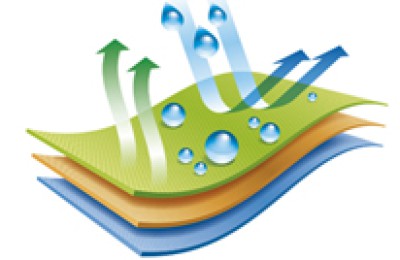Introduction to reactive dyes
As early as more than a century ago, people hoped to make dyes that could be The fibers form covalently bonded dyes, thereby improving the wash fastness of dyed fabrics. It was not until 1954 that Rattee and Stephen of Bnemen Company discovered that dyes containing dichloro-s-triazine groups can form covalent bonds with primary hydroxyl groups on cellulose under alkaline conditions. Combined, and then dyed firmly on the fiber, a class of reactive dyes that can form covalent bonds with the fiber through chemical reactions has emerged, also known as reactive dyes. The emergence of reactive dyes has opened a new page in the history of dye development.
Since its advent in 1956, the development of reactive dyes has been in a leading position. At present, the annual output of reactive dyes for cellulose fibers in the world accounts for more than 20% of the annual output of all dyes. The reason why reactive dyes can develop rapidly is because they have the following characteristics:
1. Dyes can react with fibers to form covalent bonds. Under normal conditions, this bond will not Dissociation, so once the reactive dye is dyed on the fiber, it has very good dyeing fastness, especially the wet processing fastness. In addition, after the dye is dyed on the fiber, it will not suffer from light embrittlement like some vat dyes.
2. It has excellent leveling performance, bright color, good brightness, easy to use, complete color spectrum and low cost.
3. It has been mass-produced in China and can fully meet the needs of the printing and dyeing industry; it has a wide range of uses and can be used not only for dyeing cellulose fibers, but also for dyeing protein fibers. and dyeing of some blended fabrics.
The history of reactive dyes
Since the 1920s, Ciba Company Research began on cyanuric chloride dyes, which outperformed all direct dyes, notably Chloratine Fast Blue 8G. It is an intramolecular combination of a blue dye containing an amine group and a yellow dye with a cyanuric chloride ring to form a green tone. That is, the dye has an unsubstituted chlorine atom and can interact with fibers under certain conditions. The reaction of proteins to form a covalent bond was not recognized at the time.
In 1923, Ciba discovered that acidic monochloro-s-triazine dyes could achieve high wet fastness when dyed on wool, and thus invented the Cibalan Brill type in 1953. of dyes. At the same time, in 1952, the Hearst Company also produced a reactive dye for wool, namely Remalan, based on research on vinyl sulfone groups. However, these two types of dyes were not very successful at the time. In 1956, Bnemen Company finally produced the first commercial reactive dye for cotton, called Procion, which is now dichloro-s-triazine dye.
In 1957, Bonnemen Company developed a chloro-s-triazine reactive dye called Procion H.
In 1958, Hearst Company successfully used vinyl sulfone-based reactive dyes for the dyeing of cellulose fibers, called Remazol dyes.
In 1959, Sandoz and Geigy officially produced another reactive group dye, the trichloropyrimidine type. In 1971, a difluorochloropyrimidine-type reactive dye with better performance was developed on this basis. In 1966, Ciba developed a reactive dye based on a-bromoacrylamide, which had better performance in wool dyeing, which laid the foundation for the future use of high-fastness dyes on wool.
In 1972, Benemen Company developed a dye with dual reactive groups based on a chlorotriazine-type reactive dye, namely Procion HE. This type of dye has further improvements in performance such as reactivity with cotton fiber and color fixation rate.
In 1976, Benemen Company produced another type of dye with a phosphonic acid group as the active group, which can form covalent bonds with cellulose fibers under non-alkali conditions. Bonded, especially suitable for dyeing in the same bath or printing with disperse dyes, the trade name is Pushan T.
In 1980, Sumitomo Corporation of Japan developed a dye with dual reactive groups of vinyl sulfone and monochloro-s-triazine based on the vinyl sulfone-type Sumifix dye.
In 1984, Nippon Chemical Company developed a reactive dye named Cayaselon, which added a nicotinic acid substituent to the s-triazine ring. It can form a covalent bond reaction with cellulose fibers under high temperature and neutral conditions, so it is particularly suitable for dyeing polyester/cotton blended fabrics using disperse/reactive dye high temperature and high pressure one-bath dyeing methods.
The structure of reactive dyes
The biggest difference between reactive dyes and other types of dyes The difference is that its molecule contains active groups (also known as reactive groups) that can form covalent bonds with certain groups (hydroxyl, amino) of the fiber through chemical reactions. The structure of reactive dyes can be represented by the following general formula: S-D-B-Re
Where: S – water-soluble group, such as sulfonic acid group;
D——Dye parent;
B——The connecting group between parent dye and reactive group;
Re——active group.
In general, the application of reactive dyes on textile fibers should at least meet the following conditions:
High water solubility, high Excellent storage stability and not easy to hydrolyze;
High reactivity to fibers and high fixation rate;
Dye The chemical stability of the bonds between fibers is high, and the bonds are not easily broken or faded during use.��;
Good diffusion, good level dyeing and dyeing through;
Various dyeing fastnesses, such as daily Good fastness to sun, weather, washing, friction and chlorine bleaching;
Unreacted dyes and hydrolyzed dyes are easy to wash away after dyeing and do not stain;
The dyeing has good lifting properties and can be dyed into deep and dense colors;
The above conditions, together with the active group, dye matrix and water-soluble There is a close relationship with reactive groups, among which reactive groups are the core of reactive dyes, which reflect the main categories and properties of reactive dyes. </p







